A few weeks ago I had the opportunity to sketch the scenery below at the beautiful Cuacos de Yuste while on holidays in Spain.
After I posted a classic humblebrag drawing of the location that is as much a sketch as that Instagram girl who “#justwokeup #nofilter #nomakeup”. In that post, a comment by
posed an interesting question.I would say that this piece is on the high effort side of a sketch for myself. It took around 2 hours, but because it wasn’t too long I could do most of it on location and take in as much of the ambient as possible. The sound of the fountain, the warmth and the fresh water smell.
But this whole thing reminded my of something I said to a student not too long ago. “Just paint like an Olympian!”
So this painting below is to answer Ryan’s question, this is how a big sketch would look like.
This particular place is of importance to my in-laws. While the first one was for practice, it was all so I could make this second one as gift to them.
I was still very limited on time, since we were visiting them for only a few days. I could only spare about 6 hours, but they ended up being very productive ones.
I got to work in a lot more detail, perspective and values, and I would have loved to explore a couple more techniques, but the circumstances weren’t right for it. I do love the end result though.
So what’s the idea about painting like an Olympian?
A few years ago I had this realization that really made me put into perspective the way I approach my craft.
It is far too easy when you are learning a subject, to start a project that is out of scope. It often requires more effort and skill than what you currently possess, and instead of learning, you get stress and frustration. And so another project that goes in the pile of unfinished works, the ever growing reminder of your failures.
And my realization is that if I were to compare myself to an athlete (no snickering ok?), that those projects are the main event, my Olympics.
It would sound crazy if I only went to competitions and not practice in between. Like a football player who only plays at the matches but doesn’t attend practice, there is no point to only doing complete and complex paintings. You have to break practice into small, reasonable chunks that slowly add up.
So I had to define it well, what I would consider practice and what would be a larger scope project. My general approach was that every time I struggled with something, I would add that to my ever growing practice list and that would become my point of focus for a little bit. Get some repetitions in, grow those art muscles.
There is not much more to this concept really, you can extrapolate the rest of the logic from here and apply it to your area of interest. If you let yourself think about it over a couple of days, it really sinks in how important it is to practice.
But it’s worth me sharing some of the things that were part of my formative exercises.
Quick Poses
It probably all started with these. I included the very first one I made, even though makes me cringe, but we're not hiding how the sausage is made here.
I often used the two websites linked below to begin with, but after a while I needed more pose variety, so I downloaded sets of images and used the GestureDrawing! App get the same functionality but locally on my computer. Far more versatile and I got a lot of mileage out of it.
http://reference.sketchdaily.net/
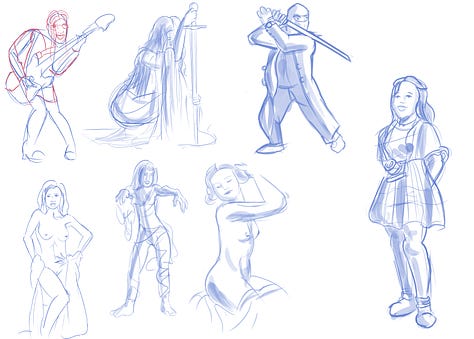
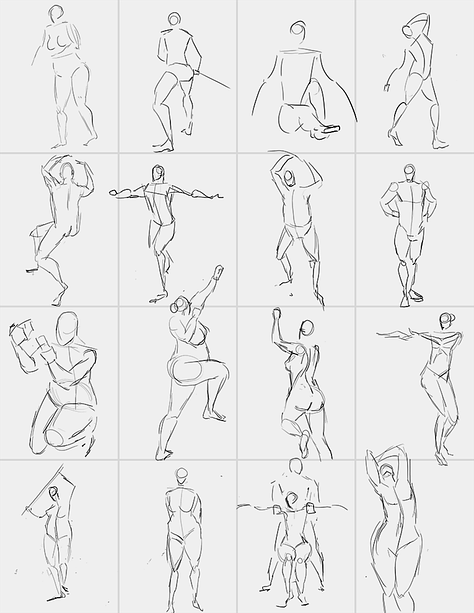
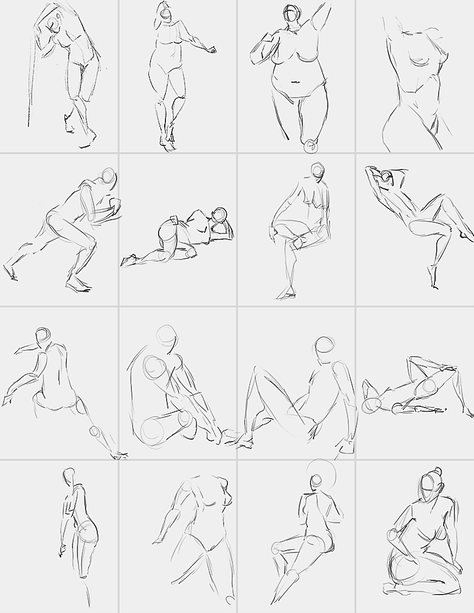
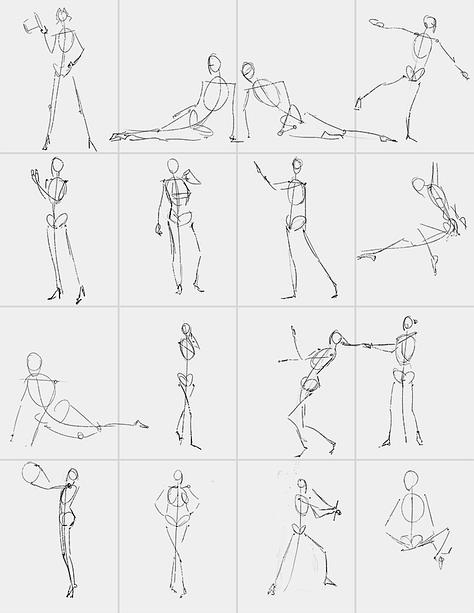
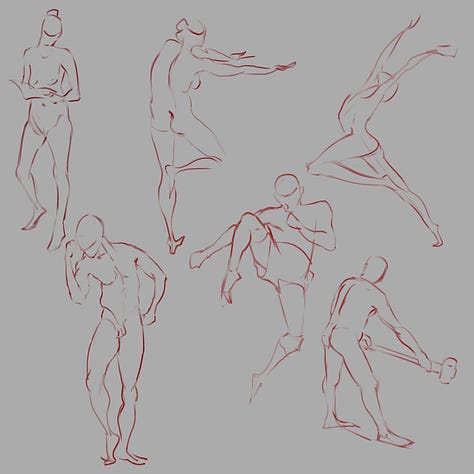
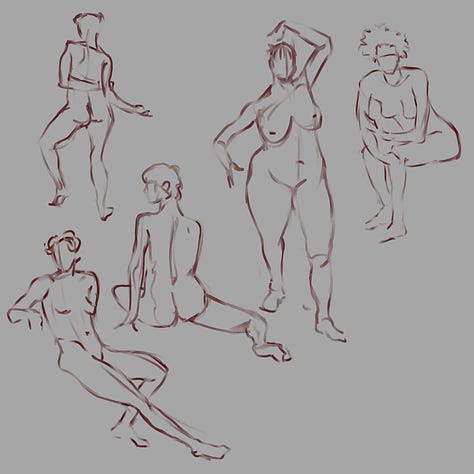
Here’s a quick tour through a bit of my sketch book where I put these exercises into practice.
Life Drawing
This was the natural progression of the gesture practice, and if I could, I would go every week. It’s a lot of work, and it requires an entry fee, but being surrounded by fellow artists as well as the not quite static nature of the posing makes for a far more envolved process.
https://www.instagram.com/jamartclub/
Again, I have a few of the drawings in my sketchbook for you to see here.
Urban Sketchers
I have shared about having joined the Urban Sketchers group in another post, but this is where I get my landscape repetitions in. It’s not part of my regular practice, so I mostly do it once a month when the group meets, but I’m dabbling more and more on this subject and you can fall in love with the plein air practice very easily.
Breakdown
This is easier to explain than show. When I first started painting landscapes, it was easiest for me to practice different elements separately, piece them into more digestible portions. And it worked out great because they all require slightly different techniques, tools, and theory, so I practised all of these individually
Skies
Mountains
Trees
Rocks
Buildings
And only later started to do projects where I got to paint them all together like this commission for the Cosmara Tabletop RPG.
Mastering Tools
Even learning how to use another software or a new painting medium requires practice before tackling that big job. When I did my first watercolour painting, I did swatches of every pan, so I know what they look like on paper (please don’t look at how mistreated the paint pans are).
Finding out what brushes or paper works best for your particular technique is all part of the practice exercises.
What about you?
Many of you are artists, but many are writers too. And so, I would love to know how you practice your craft and solve problems in your artistic process. I am looking for some exercises like the ones I showed but for writing, so please share anything you can! I am sure others will appreciate it.
To you, from the home of magic.
Marco D Blanco.





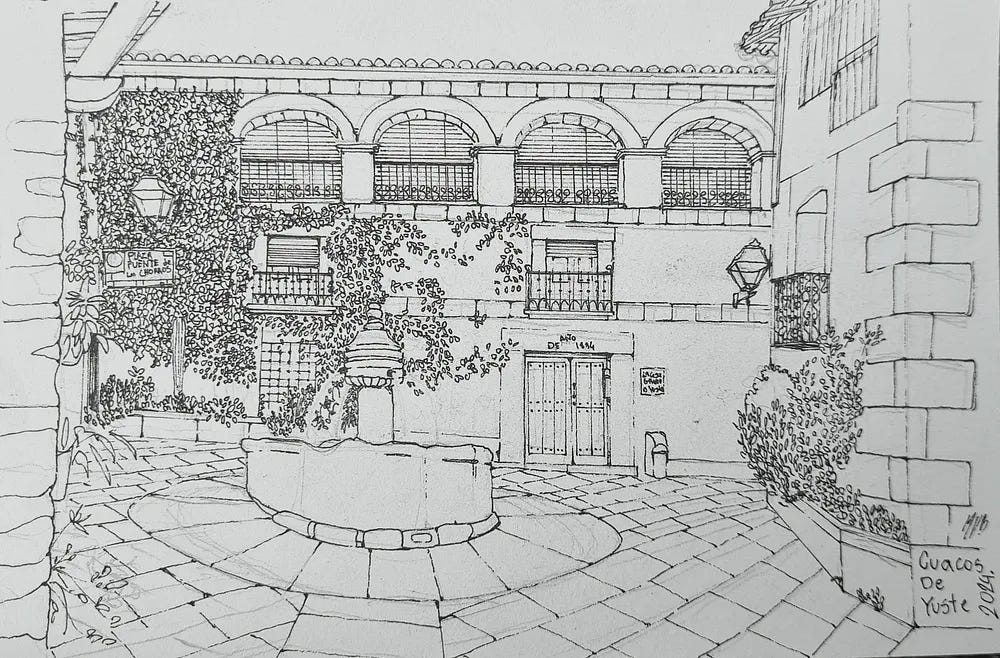
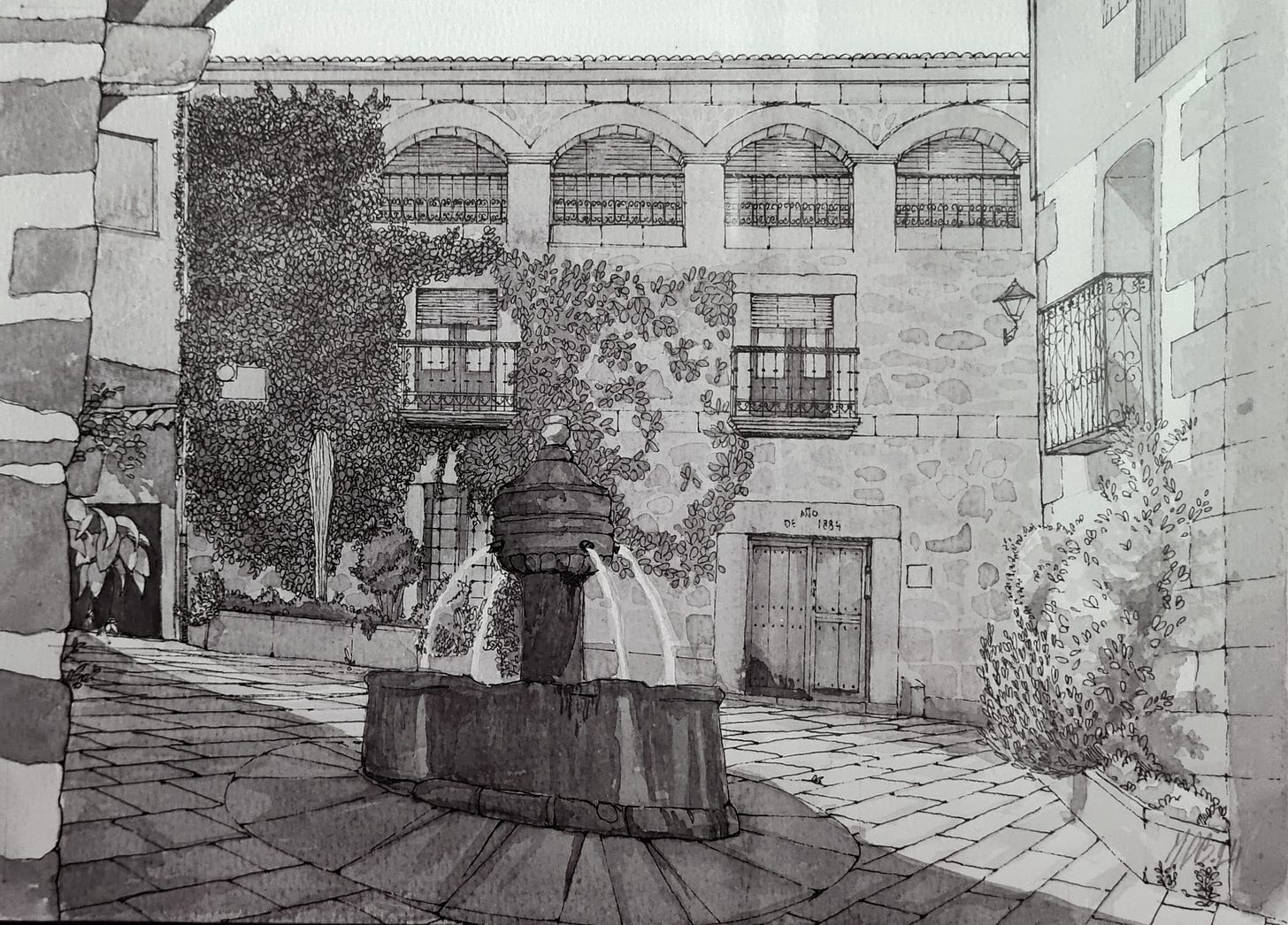
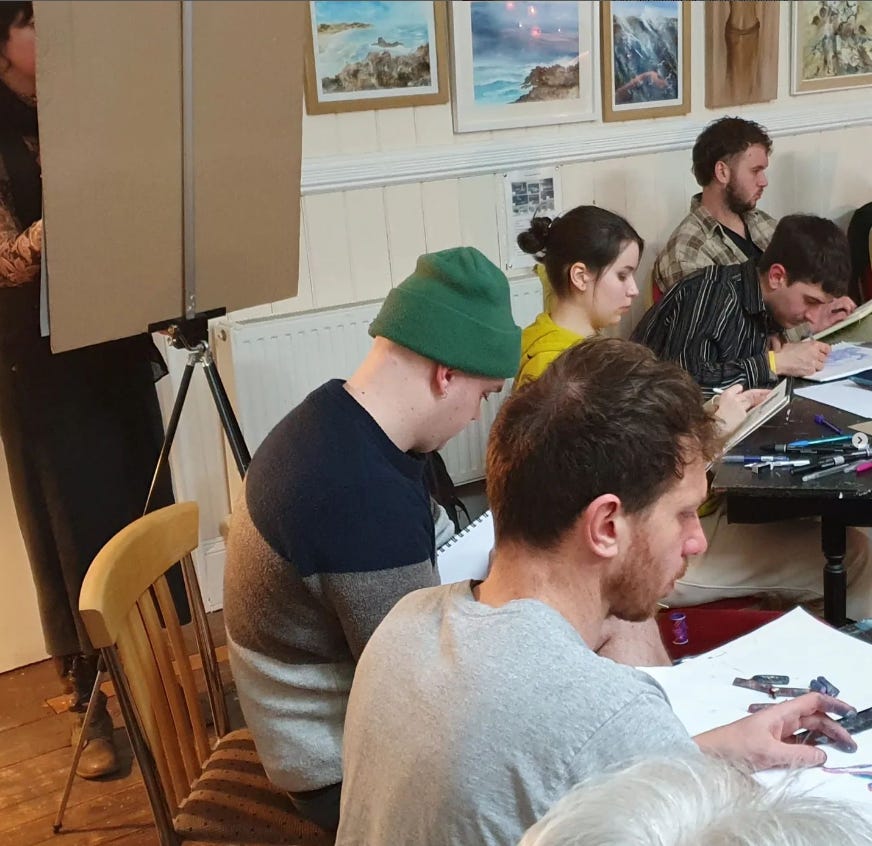
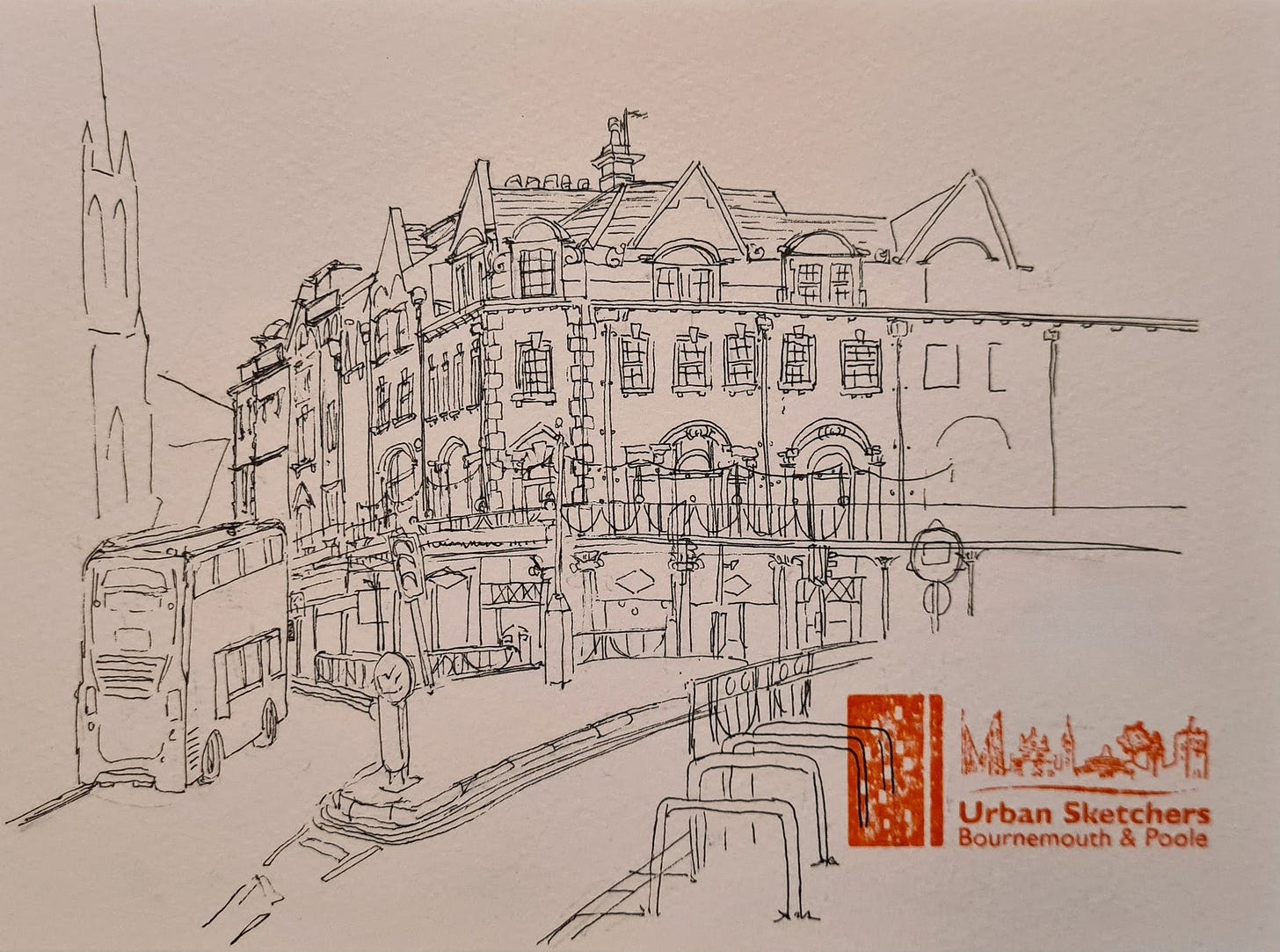
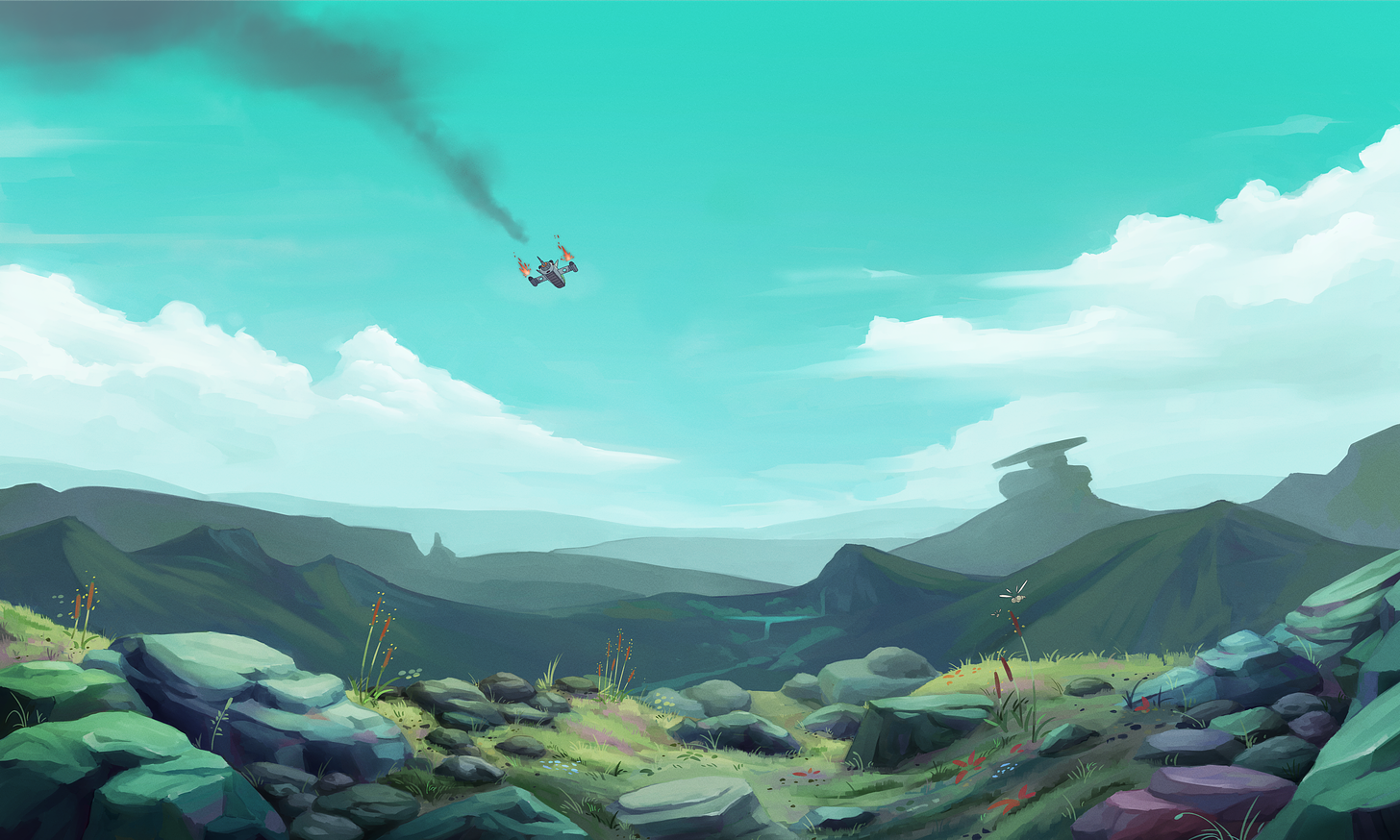
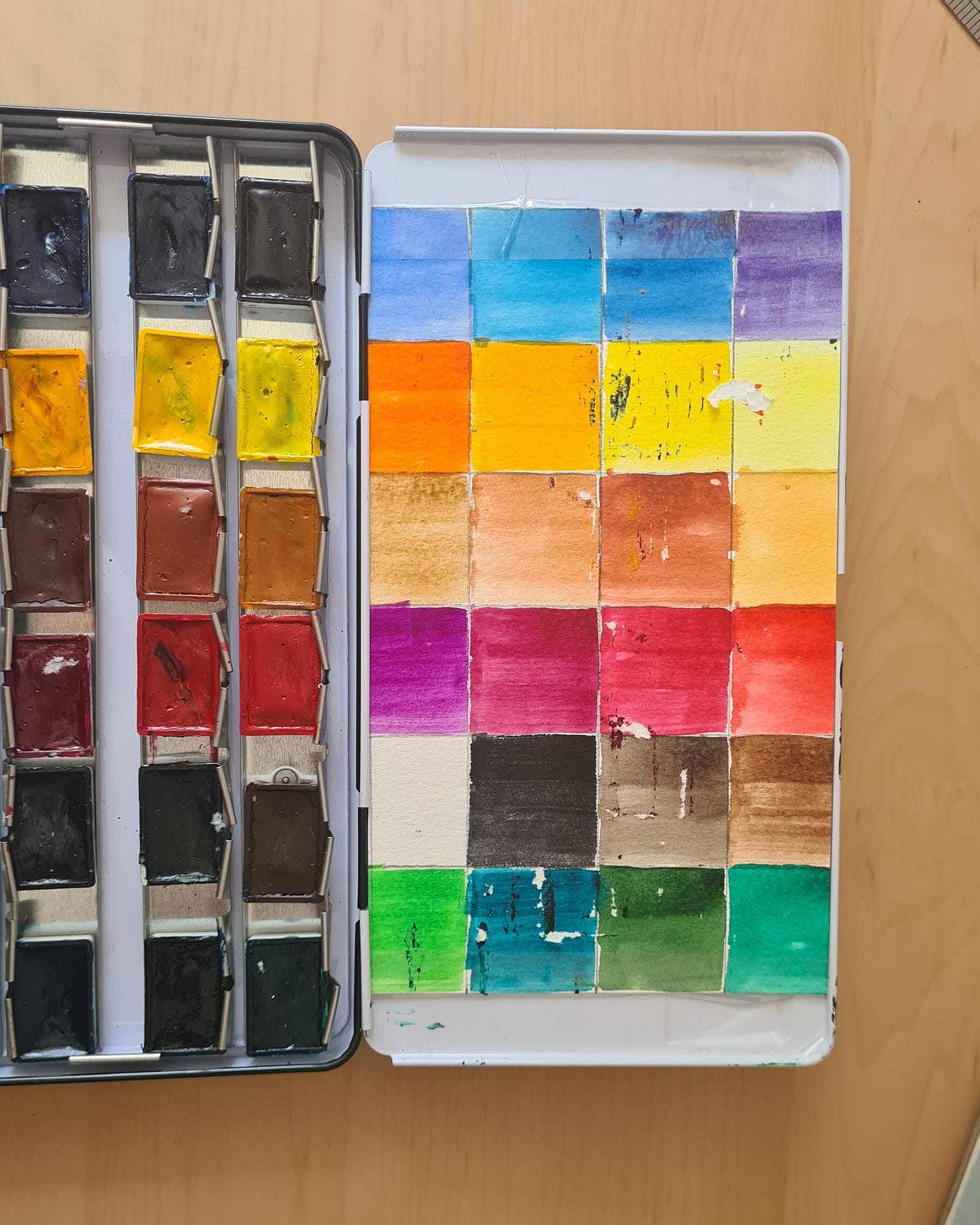
Part of the multifaceted genius of the “paint like an olympian” line is that it sounds HEROIC and makes you want to think of yourself as an olympian. I think thats why no one likes doing baby steps—im not a baby! But an olympian—I can be an olympian!!
Love your artwork, thank you for sharing your wisdom!
Loved the post! It was great seeing your process, and it is all very applicable to writing. My version of ‘sketching’ is writing using only action and dialogue. Exposition is easy, and the gear my brain always wants to kick back into. So if I don’t allow myself to exposit, I’m able to quickly practice the craft! It also takes the pressure off in a way.